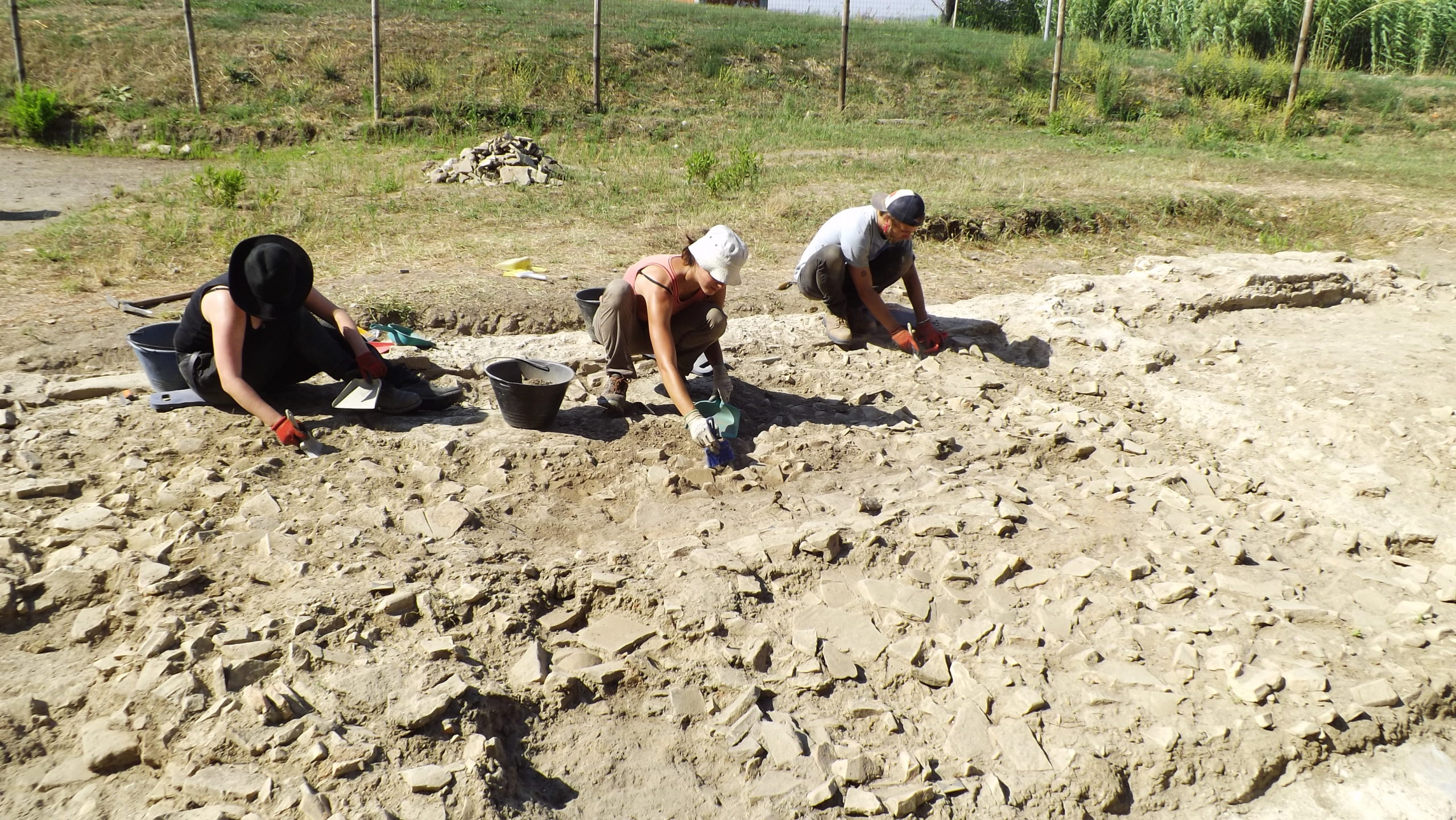
The Vada Volaterrana harbour project stems from the long lasting researches conducted by the staff of the Laboratory of Ancient Topography of the University of Pisa in San Gaetano di Vada (Rosignano Marittimo, Livorno), and all along the coast of Northern Tuscany, in order to reconstruct the townscapes and landscapes of Northern Etruria in a diacronic perspective.
Our project focuses on Vada Volaterrana, the core of the harbour system of Volterra, one of the most famous Etruscan and Roman cities in Italy. Here, a settlement of considerable interest has been identified in San Gaetano di Vada: it is a port area which has been excavated by the members of the staff and students of the Vada Volaterrana Archaeological Field School.
 The excavations are part of an interdisciplinary project aimed at defining the paleogeography of the Vada Volaterrana area during Etruscan and Roman times. The project includes paleoenvironmental researches and Ground Penetrating Radar prospections to identify the full extent of the Vada Volaterrana settlement. Moreover, systematic underwater surveys are being conducted in the Vada Volaterrana seabed, in order to identify ancient harbour facilities and enhance our understanding of shipwrecks and underwater findings in the area.
The excavations are part of an interdisciplinary project aimed at defining the paleogeography of the Vada Volaterrana area during Etruscan and Roman times. The project includes paleoenvironmental researches and Ground Penetrating Radar prospections to identify the full extent of the Vada Volaterrana settlement. Moreover, systematic underwater surveys are being conducted in the Vada Volaterrana seabed, in order to identify ancient harbour facilities and enhance our understanding of shipwrecks and underwater findings in the area.
Since 2018 the Vada Volaterrana Harbour Project started a partnership with professor Stephen Carmody of Troy University (Alabama) aimed in deepening paleobotanical and environmental features of the area. Flotation of Vada excavated layers provided unexpected and interesting results about landscapes in a diachronical perspective, tree essences and food supply in ancient coastal Etruria.
Objective
 The Summer school aims at providing participants with the understanding of the different activities inherent to the job of archaeologist, both in the field and the lab. The Summer School at Vada Volaterrana is an excellent opportunity for students to gain practical experience in archaeological investigation, working side-by-side with skilfull and experienced researchers in the field. The members of the staff will explain how archaeologists work, from the identification of ancient sites through surveys and GPR (Ground Penetrating Radar) investigations to the stratigraphic excavation.
The Summer school aims at providing participants with the understanding of the different activities inherent to the job of archaeologist, both in the field and the lab. The Summer School at Vada Volaterrana is an excellent opportunity for students to gain practical experience in archaeological investigation, working side-by-side with skilfull and experienced researchers in the field. The members of the staff will explain how archaeologists work, from the identification of ancient sites through surveys and GPR (Ground Penetrating Radar) investigations to the stratigraphic excavation.
Target group
 Our Summer school welcomes University students in Archaeology, Classics, History, and Arts at the undergraduate and graduate levels who wish to have an hands-on experience of archaeological excavation in Italy.
Our Summer school welcomes University students in Archaeology, Classics, History, and Arts at the undergraduate and graduate levels who wish to have an hands-on experience of archaeological excavation in Italy.
The Summer school admits a maximum of 15 participants.
Credits
The University of Pisa will issue a signed certificate for 6 credits. Participants will be examinated at the end of the summer school, by means of a test (both oral and practical) concerning field activities.
